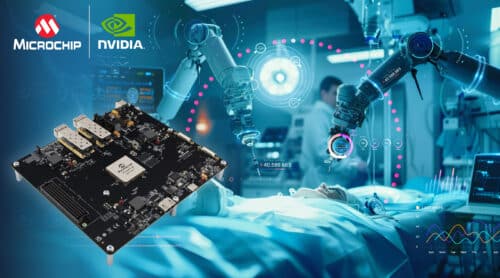The solution bridges AI and sensor processing, enabling data handling, real-time processing, multi-protocol support, and low-latency performance for various industries.

Microchip Technology has introduced the PolarFire FPGA Ethernet Sensor Bridge to support developers in building AI-driven sensor processing systems. The solution integrates with the NVIDIA Holoscan sensor processing platform, enabling efficient and versatile sensor data handling.
The FPGA ethernet sensor bridge is designed for developers, engineers, and professionals across the medical, industrial, automotive, aerospace, and research industries. It supports building AI-driven sensor processing systems, edge AI applications, and real-time data processing with multi-protocol sensor compatibility. It is suitable for medical imaging, industrial automation, automotive systems, and aerospace applications and enables efficient, secure, and reliable handling of high-bandwidth sensor data.
Holoscan provides an integrated platform for developing AI and high-performance computing (HPC) edge applications. It offers optimized libraries for data processing, prebuilt AI models, prototyping templates, and core microservices for streaming, imaging, and other edge-focused applications.
The FPGA Ethernet Sensor Bridge connects real-time sensor data to NVIDIA Holoscan, IGX, and Jetson platforms, unlocking opportunities for edge-to-cloud AI/ML inferencing. This functionality addresses applications in medical, industrial, and automotive markets.
By leveraging PolarFire FPGAs’ low power consumption, the Ethernet Sensor Bridge efficiently manages high-bandwidth sensor data over Ethernet, enabling real-time AI processing on NVIDIA platforms. This design is well-suited for compact, energy-conscious, and cost-sensitive applications.
PolarFire FPGAs also enhance security in sensor applications with embedded safety features, addressing potential cyber threats and ensuring data integrity. Designed with single event upset (SEU) immunity, they are reliable in radiation-prone environments like space, high altitudes, and medical applications, reducing data corruption risks and system failures.
“The Ethernet sensor bridge is based on Microchip’s highly power-efficient, secure and reliable PolarFire FPGA platform,” said Bruce Weyer, vice president of Microchip’s FPGA business unit. “By combining our flexible FPGA fabric with NVIDIA's advanced AI platform and multi-protocol support, we’re empowering developers to create innovative, real-time solutions that will revolutionize sensor interfaces across a wide range of powerful AI-driven edge applications.”







